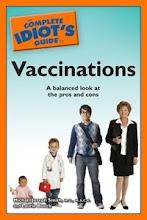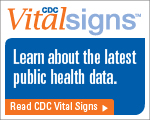In a news release on May 1, the FDA described the reasons for the voluntary recall. To quote from the release:
McNeil Consumer Healthcare is initiating this voluntary recall because some of these products may not meet required quality standards. As a precautionary measure, parents and caregivers should not administer these products to their children. Some of the products included in the recall may contain a higher concentration of active ingredient than specified; others contain inactive ingredients that may not meet internal testing requirements; and others may contain tiny particles.Let me parse this vaguely-worded statement: during a plant inspection, McNeil and/or the FDA found that some of the products have too much medicine in them. Some of the products have contaminated or ineffective ingredients. And some of the products contain tiny particles - of what? Plastic? Metal?
I found the bottle of children's Benadryl that we bought recently and checked the NDC number (printed above the name) in McNeil's online database of recalled products. Fortunately, the lot of the Benadryl we bought was not on the recall list.
I'm relieved, but the larger question remains: what happened? McNeil is owned by Johnson & Johnson, and an employee blog designed to improve customer relations briefly discussed the recalls. Some comments on the blog, however, blamed the problems on plant managers for not listening to safety concerns raised by workers, and others said that the timing of the recall announcement was designed to minimize the problem.
It turns out that this is the second recall this year of medicines manufactured by McNeil.
In January, McNeil recalled hundreds of lots of over-the-counter products, including Children's Motrin, Children's Tylenol, Benadryl, and Extra-Strength Tylenol, in response to consumer complaints that the products had a "moldy, musty, or mildew-like odor" and the products gave some people gastrointestinal problems. Company investigations found that these products were contaminated with a chemical used to treat wood pallets used in manufacturing facilities.
McNeil dragged its feet for over a year on recalling the moldy medicine. As Natasha Singer explains in an excellent analysis of the January recall, written on January 18 for The New York Times:
According to a federal inspection report, the response was anything but swift. The recall came 20 months after McNeil first began receiving consumer complaints about moldy-smelling bottles of Tylenol Arthritis Relief caplets, according to a warning letter sent by the Food and Drug Administration to the company on Friday.
Safety first? I don't think so. It sounds like some people at McNeil were either not doing their jobs, or not putting the consumer first. People still need medicines such as Tylenol and Benadryl, and Singer points out that they will abandon brand names for generics if they don't trust the brand. So if McNeil/Johnson & Johnson can't (quickly) fix their manufacturing problems, it will harm the company as well as consumers.
Maybe McNeil should take a lesson from parents: do your best, and try to keep the kids safe.



